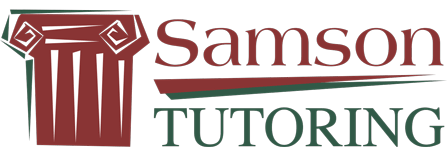Homeschooling is not school at home. In this video, I describe some of the differences between homeschooling and institutional public/private schools.
Homeschooling Styles is a series of articles outlining various approaches to home education which I personally have found useful to one degree or another. Part Two: classical education as described in The Well-Trained Mind.
The Well-Trained Mind by Jessie Wise and Susan Wise Bauer had a significant impact on my own homeschooling and teaching approach. The Well-Trained Mind (TWM) is a classical approach to education.
What is classical education? It is language-intensive (words, not images); it is history-intensive; and it trains the mind to analyze and draw conclusions.
The Well-Trained Mind shares a few principles with Charlotte Mason: the habit of care, the development of self-discipline and other aspects of character and, at least for younger students, short lessons.
For me, the major take-away was the systematic structuring of the curriculum. By that I mean structuring study of various subjects into a coherent whole. The Well-Trained Mind uses history as the “spine” of course work. As the late IT great Gerald Wineberg used to say, ”things are the way they are because they got that way.” Classical education studies history in chronological order so that students may understand how “things got that way.” Literature and science too are presented as connected to historical eras.
The Well-Trained mind recommends three repetitions of the same four-year pattern: ancients, medieval period through early Renaissance, late Renaissance through early modern times, and modern times. In my own homeschooling, I did one 8 year cycle from Big Bang to modern times and then, for the high school years, a 4 year cycle with more extensive use of original texts.
As described above, other subjects are linked to the historical period being studied. During the “ancients” period students read Greek and Roman mythology and the Iliad and The Odyssey; when the 19th century is studied students read Dickens, and so on.
The use of the timeline is another useful tool to provide context to history. A timeline can be either posted on a wall or gathered into a Book of Centuries (which was what I chose for my homeschool). Children draw or color images of historical people or events and paste them onto the appropriate place on the timeline. This allows children to “see” the relationship between events and eras, to see, for example, that Mozart and Marie Antoinette were alive at the same time. (Another book parents may find extremely useful is Timelines of History.)
Another thing about The Well-Trained Mind that I found useful was a number of books and workbooks they recommend. Among those that I used in my own homeschool were:
- Phonics Pathways for teaching reading
- Spelling Workout workbooks (first through fifth grade)
- Vocabulary from Classical Roots (grade 4 through grade 12)
The Well-Trained Mind also offers an outline of year-by-year instruction, including books and other materials. The selections it recommends for literature alone is worth the price of the book.
I have not done full justice to this book nor to the concept of classical education itself. Some of the recommendations seemed too “weighty” for my own children – the study of Latin at an early age, for example. And although I am a big fan of memorization when it comes to multiplication tables, poetry, and irregular French verbs, memorizing the kings and queens of England was not high on my list of priorities. This undoubtedly says more about me (and other, non-homeschooling, demands on my time) than about classical education.
Among other things, I have not explained the theoretical underpinnings of classical education, the three stages of classical education: grammar, logic, and rhetoric, and how schooling is tailored to each stage. Those wishing to know more would do well to go straight to the source.
In addition to The Well-Trained Mind, The Well-Educated Mind by Susan Wise Bauer, is another excellent source on classical education and the nuts and bolts of DIY schooling.
Coming in Part Three: Montessori at Home
Homeschooling Styles is a series of articles outlining various approaches to home education which I personally have found useful to one degree or another. First up: Charlotte Mason.
The Charlotte Mason Approach
Charlotte Mason was a British Victorian-era educator. Her work with children led her to several conclusions about education that Karen Andreola, author of A Charlotte Mason Companion, has described as “the gentle art of learning.” Below I list some of the principles that I found so compelling I use them in my classes with children to this day.
- Short lessons. In Miss Mason’s approach, it is more important to write a sentence one time with care than ten times failing to form the letters properly. Instilling this habit of care is an important part of the Charlotte Mason approach. Short lessons also help keep the child’s attention focused.
- Narration is another crucial aspect of the Charlotte Mason approach. Narration focuses on developing first the listening skills of the child, then on giving the child experience in organizing his/her thoughts to relate back to the parent the content of the reading – whether it is one page, one chapter, or the entire book. The organization of one’s thoughts is the basis for both understanding the material and good writing.
- Read extensively but no “twaddle.” Because reading is what forms the basis for a child’s understanding of grammar and spelling as well as the beauty of language, it is important to expose a child to “good writing.” A child’s listening level is about three years ahead of reading level so a child who may be reading simple picture books can enjoy listening to, say, Little House in the Big Woods, by Laura Ingalls Wilder.
- Use of “living” books. Living books are those written by as single author who shares their enthusiasm about his favorite subject with us.
- Copy work is intended to help the child gently absorb spelling, grammar, punctuation, and a sense of the rhythm and structure of “good writing.” The parent/teacher writes out a word or line and the child copies it. Copy work can include anything from a line from a nursery song to one of Ben Franklin’s adages.
- Nature study, direct observation of nature, provides fresh air and stimulates the child’s natural curiosity, the very basis of not just a willingness but an interest, a desire to learn.
- “Picture” and music study allows children to absorb the work of some of the world’s greatest artists and composers.
- Education is about shaping a child’s character, for the will to learn comes from within the child not from outside. Atmosphere – providing a quiet focused feeling – is an important part of helping a child learn.
Resources:
- I highly recommend A Charlotte Mason Companion for its outline of Charlotte Mason principles and its encouragement of the homeschooling mother to consider broader implications of their children’s education. “Education is a science of relations,” says Miss Mason, by which she meant that education is more than textbooks and worksheets. Education is about forming a relationship with Knowledge. A child who enjoys learning will do so their entire life.
- Although modern readers may be unused to the Victorian style of writing, The Original Home Schooling Series by Charlotte Mason, consisting of seven volumes, has much food for thought. I particularly recommend volume 5, Formation of Character.
- Amblesideonline is a wonderful source of information about the Charlotte Mason principles, as well as detailed year-by-year curriculum and book lists.
Coming in Part Two: Classical Education and The Well-Trained Mind

